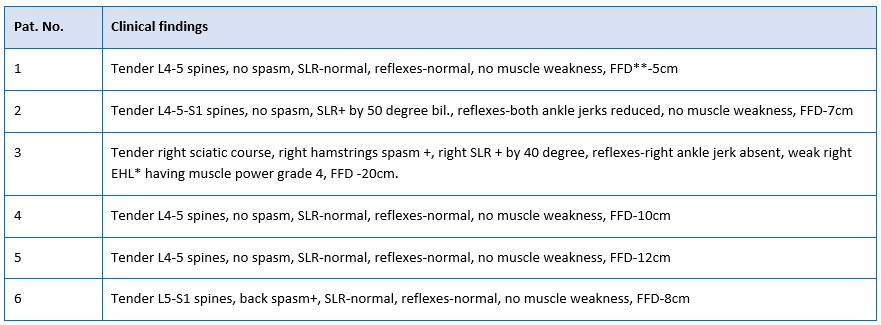Use of Pipal tree (Ficus religiosa) extract in Lumbar Disc Lesion - Induced Neuropathy
DOI:
https://doi.org/10.21760/jaims.9.5.2Keywords:
Pipal (Ficus religiosa), Plant Extract, Phytochemicals, Neuropathy, Lumbar disc herniationAbstract
Incidences of neuropathic pain can occur following a lesion in or a disease of the somatosensory nervous system leading to problems of poor physical, cognitive, and psychosocial health. Roots of neuropathic pain can be in a number of diseases like diabetes mellitus, herpes zoster, cancer, spinal disorders, and human immunodeficiency virus infection as well as in some clinical interventions like chemotherapy and surgery, and in physical injuries like accidents and related trauma resulting in spinal cord injuries. Therefore, regimen of treatments varies according to the etiology and chronicity. Various types of treatments and medications are prevalently being used to alleviate neuropathic pain. These medicines have varying analgesic effects with frequent side effects including dependency issues. The idea of using herbal extract of Pipal tree (Ficus religiosa) for neuropathic pain was developed after extensive study of Ayurveda literature, discussion with Ayurveda experts while keeping in mind the descriptions about it in Indian ancient literature like Puranas and Shastras. So far specific chemicals extracted from Pipal are not scientifically studied for their effects on neurological conditions. However, recently it was reported that its biochemical contents have some neurotrophic effects. In order to assess the neurotrophic effects of Pipal extract and its beneficial effects in chronic neuropathic pain of lower limbs induced by lumbar disc lesions, we carried out a study. Our findings demonstrate that the herbal extract helped the patients without inciting any unwanted side effects.
Downloads
References
Rosenberger DC, Blechschmidt V, Timmerman H, Wolff A, Treede RD. Challenges of neuropathic pain: focus on diabetic neuropathy. J Neural Transm (Vienna). 2020 Apr;127(4):589-624. doi: 10.1007/s00702-020-02145-7. Epub 2020 Feb 8. PMID: 32036431; PMCID: PMC7148276.
North RY, Li Y, Ray P, Rhines LD, Tatsui CE, Rao G, Johansson CA, Zhang H, Kim YH, Zhang B, Dussor G, Kim TH, Price TJ, Dougherty PM. Electrophysiological and transcriptomic correlates of neuropathic pain in human dorsal root ganglion neurons. Brain. 2019 May 1;142(5):1215-1226. doi: 10.1093/brain/awz063. PMID: 30887021; PMCID: PMC6487328.
Vinutha B, Prashanth D, Salma K, Sreeja SL, Pratiti D, Padmaja R, Radhika S, Amit A, Venkateshwarlu K, Deepak M. Screening of selected Indian medicinal plants for acetylcholinesterase inhibitory activity. J Ethnopharmacol. 2007 Jan 19;109(2):359-63. doi: 10.1016/j.jep.2006.06.014. Epub 2006 Aug 4. PMID: 16950584.
Bhangale JO, Acharya SR. Anti-Parkinson Activity of Petroleum Ether Extract of Ficus religiosa (L.) Leaves. Adv Pharmacol Sci. 2016;2016:9436106. doi: 10.1155/2016/9436106. Epub 2016 Jan 17. PMID: 26884755; PMCID: PMC4738991.
Sultana B, Anwar F. Flavonols (kaempeferol, quercetin, myricetin) contents of selected fruits, vegetables and medicinal plants. Food Chem. 2008 Jun 1;108(3):879-84. doi: 10.1016/j.foodchem.2007.11.053. Epub 2007 Nov 29. PMID: 26065748.
Charde RM, Dhongade HJ, Charade MS, Kasture AV. Evaluation of antioxidant, wound healing and anti-inflammatory activity of ethanoic extract of leaves of Ficus religiosa. Int J Pharm Sci Res. 2010; 19(5):73-82.
Khare CP. Encyclopedia of Indian medicinal plants. Berlin Heidelberg, New York: Springer-Verlag; 2004. pp. 50–8. 5
Lansky EP, Paavilainen HM, Pawlus AD, Newman RA. Ficus spp. (fig): ethnobotany and potential as anticancer and anti-inflammatory agents. J Ethnopharmacol. 2008 Sep 26;119(2):195-213. doi: 10.1016/j.jep.2008.06.025. Epub 2008 Jun 28. PMID: 18639620.
Kapoor M, Jasani N, Acharya N, Acharya S, Kumar V. Phytopharmacological evaluation and anti-asthmatic activity of Ficus religiosa leaves. Asian Pac J Trop Med. 2011 Aug;4(8):642-4. doi: 10.1016/S1995-7645(11)60163-6. PMID: 21914543.















